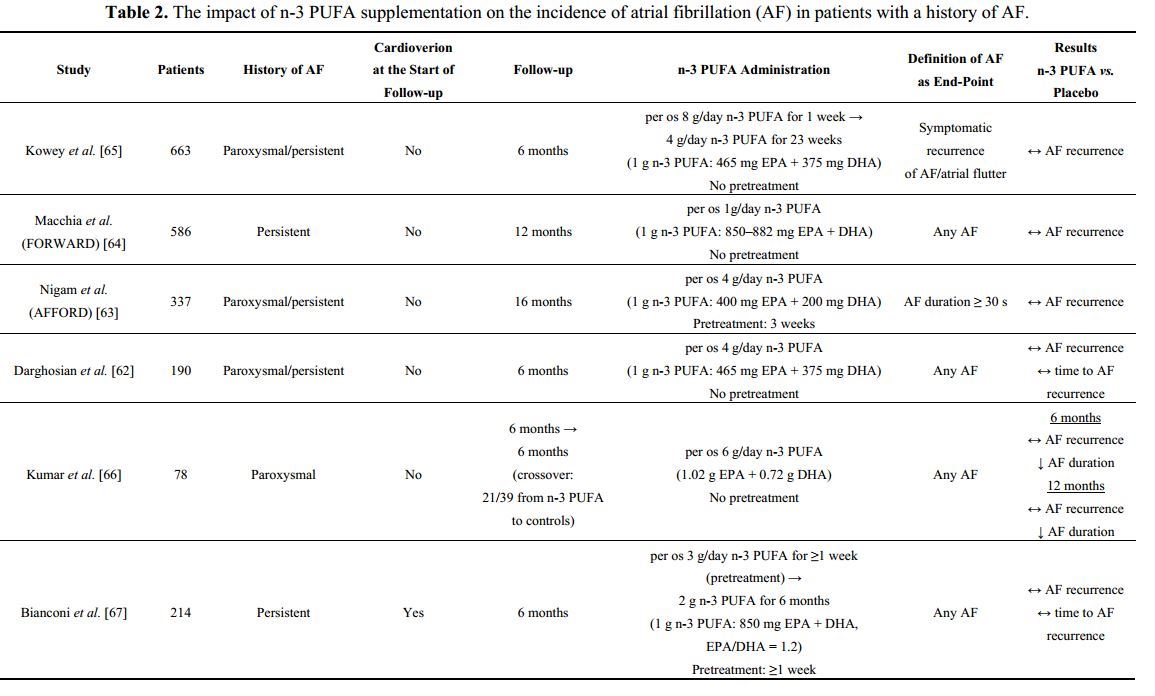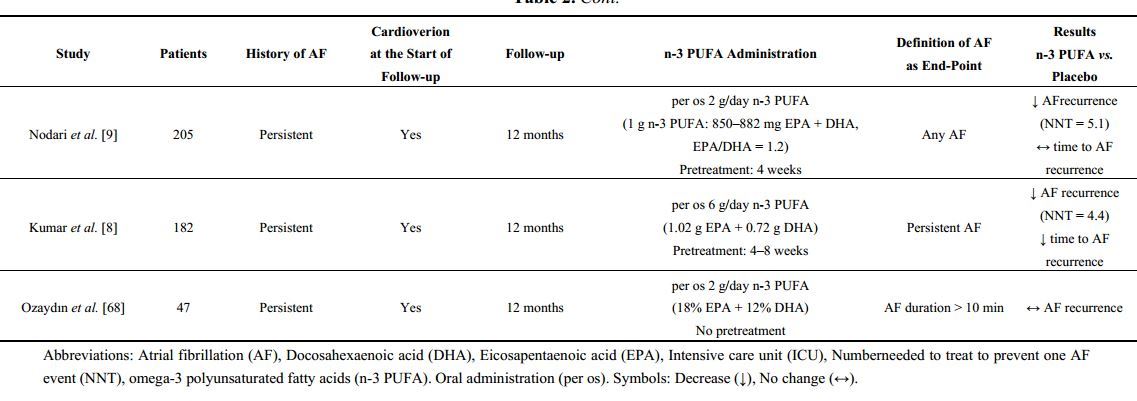Atrial fibrillation sometimes treated by Omega-3 – meta-analysis
The Current Role of Omega-3 Fatty Acids in the Management of Atrial Fibrillation
Int. J. Mol. Sci. 2015, 16, 22870-22887; doi:10.3390/ijms160922870


Georgios A. Christou 1 [email protected], Konstantinos A. Christou , Panagiotis Korantzopoulos 3,
Evangelos C. Rizos 4, Dimitrios N. Nikas 3 and John A. Goudevenos 3
Laboratory of Physiology, Medical School, University of Ioannina, 45110 Ioannina, Greece
First Department of Internal Medicine, University Hospital of Ioannina, 45110 Ioannina, Greece; E-Mail: [email protected]
First Department of Cardiology, University Hospital of Ioannina, 45110 Ioannina, Greece;
E-Mails: [email protected] (P.K.); [email protected] (D.N.N.); [email protected] (J.A.G.)
Second Medical Department and Outpatient Lipid Clinic, University Hospital of Ioannina,
45110 Ioannina, Greece; E-Mail: [email protected]
Background: The main dietary source of omega-3 polyunsaturated fatty acids (n-3 PUFA) is fish, which contains eicosapentaenoic acid (EPA) and docosahexaenoic acid (DHA). In the present manuscript, we aimed to review the current evidence regarding the clinical role of n-3 PUFA in the prevention of atrial fibrillation (AF) and the possible underlying mechanisms.
Methods: A literature search based on PubMed listings was performed using “Omega-3 fatty acids” and “atrial fibrilation” as key search terms.
Results: n-3 PUFA have been shown to attenuate structural atrial remodeling, prolong atrial effective refractory period through the prevention of reentry and suppress ectopic firing from pulmonary veins. Dietary fish intake has been found to have no effect on the incidence of AF in the majority of studies. Circulating DHA has been consistently reported to be inversely associated with AF risk, whereas EPA has no such effect. The majority of studies investigating the impact of n-3 PUFA supplementation on the incidence of AF following cardiac surgery reported no benefit, though most of them did not use n-3 PUFA pretreatment for adequate duration. Studies using adequate four-week pretreatment with n-3 PUFA before cardioversion of AF showed a reduction of the AF incidence.
Conclusions: Although n-3 PUFA have antiarrhythmogenic properties, their clinical efficacy on the prevention of AF is not consistently supported. Further well-designed studies are needed to overcome the limitations of the existing studies and provide robust conclusions.
📄 Download the PDF from Vitamin D Life
Magnesium is better than Omega-3
Vitamin D Life pages with ATRIAL OR AFIB OR ARRHY in title (15 as of Sept 2022)
This list is automatically updated
{LIST()}
